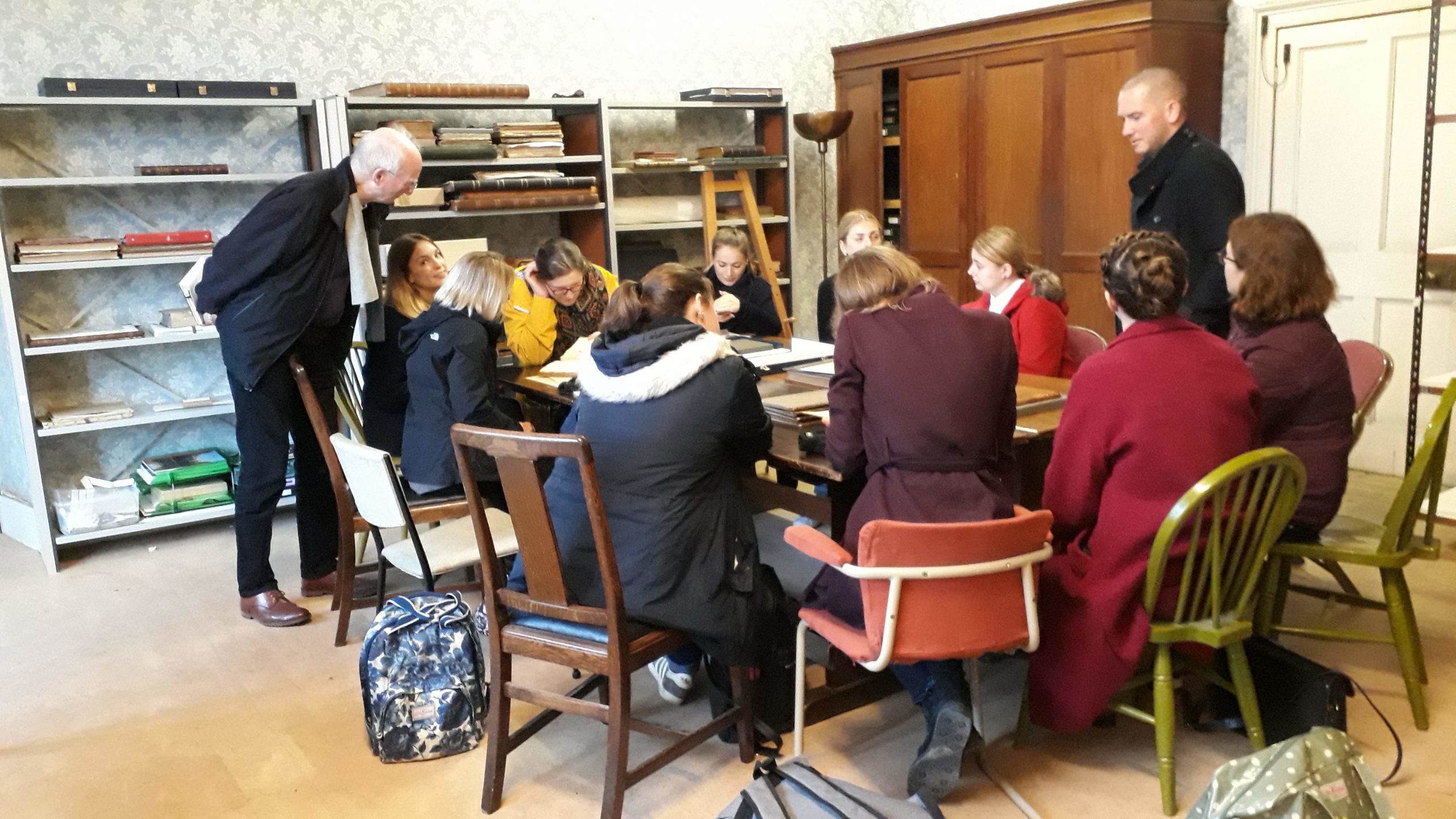Handing you over to Prof. Kate Retford, for a special blog post. Many of you will know Kate as previous head of department and the originator of this blog; she teaches across the programmes in the department, is author of The Conversation Piece (Yale and Paul Mellon Centre, 2017) and many other publications on eighteenth century art, and is currently programme director of the MA History of Art. Over to you, Kate!
For me, the Autumn term 2019 was all about the British country house! Recently, my research has been concentrating on these sites, such a dominant aspect of British ‘national heritage’. The membership of the National Trust has now topped 5 million: 22 million visits were made to their historic house properties in 2017. As I’d begun thinking about my new country house research project, I’d decided it would be a good idea to develop an MA option on the topic, so ‘The Country House Experience’ module ran for the first time in the Autumn term. A close relationship between research and teaching is always beneficial for everyone concerned, and this course paid great dividends. It got me reading around the subject broadly, and thinking more deeply about certain topics than I had before, and the discussions I had with the group of engaged and informed Masters students who signed up for the course were fascinating. We moved from talking about difficult legacies of slavery in the country house to the recent turning of attention towards servants’ quarters and service wings; we discussed key moments such as the birth of the National Trust Country House scheme in the 1930s, and the Destruction of the Country House exhibition at the V&A in 1974, when visitors were greeted with a tumbling portico and a dramatic soundtrack as part of an emotive plea to halt demolition of properties, and the dispersal of collections.
The highlight of the ten weeks module was a day trip to Audley End in Essex, run by English Heritage: a great success thanks to the generosity and expertise of its Curator, Dr. Peter Moore. Peter was kind enough to look through our course materials ahead of the visit, and then take care to show us spaces and objects in the house which chimed with particular issues of concern. He also spoke openly and engagingly about the joys and challenges of looking after a historic house property, and took us into various parts of the house not normally seen by visitors. We got to look at works of art on racks in the stores, and also went up to the attics where Peter got out a rich variety of archival material for the students to handle (carefully!) and read. One object which really stuck in everyone’s minds was a late nineteenth-century cookery book, handwritten by Avis Crocombe, head cook at Audley End. Mrs Crocombe, we were fascinated to learn, has become a youtube sensation – check out her recipes online!
I also headed up to Manchester at the start of December for a conference on ‘The Houses of Politicians’, exploring the myriad and complex ties between politics and the country house in the long eighteenth century. Speakers came from Canada, and the US, but we also had a triumvirate of representatives from Birkbeck! As well as me, there to moderate a session, Fiona Candlin took part to speak about her ‘Mapping Museums’ project in a paper engagingly entitled: ‘When is a historic house a museum? (and why might it matter)’. One of my PhD students, Juliet Learmouth – currently working on women and eighteenth-century town houses – was also there to give a paper on Sarah, Duchess of Marlborough, and the highly political town house she built in the early eighteenth century: Marlborough House, now home to the Commonwealth Secretariat. As part of the conference, Juliet, Fiona and I joined the other delegates on a trip out to Wentworth Woodhouse, currently being restored by the Wentworth Woodhouse Preservation Trust. It was a memorable sunny winter’s afternoon: not only were we given a guided tour around the interiors, but we were also taken onto the roof, able to see the enormous timber structure without its slates, and were escorted round what one colleague dubbed ‘the urn hospital’!
The restoration work being done at the property is impressive and ambitious, but we also heard from a deeply committed team of volunteers, as well as the CEO, about how the project is working as an important regeneration project, focused on the local community, with plans for the site as a wedding venue, conference centre, hub for small businesses etc. To find out more, have a look at their website.
Then, in the final week of term, the Birkbeck Eighteenth Century Research Group and the Architecture, Space and Society Centre filled the Keynes Library to capacity for an afternoon symposium on the English country house. The weather was awful, it was election day, but so many people turned out that we ended up running around the building in search of more chairs. Jon Stobart from Manchester Metropolitan spoke about the themes of comfort and family through objects in the eighteenth-century house; Abby van Slyck, over from Connecticut College in the US, shared her new research on the Swiss Cottage at Osborne House, a playhouse constructed for Victoria and Albert’s children while I talked about my new work on the marketing of the country house as a ‘family home’, set up in opposition to a ‘museum’. The papers worked well together, we managed not to think about what was happening in the polling stations for a couple of hours, and it was a great way to wrap up my term of country houses.





